|
There are few things as intimate as the public display that is live theater. Unlike a film, where you are strictly a spectator (no matter how emotionally involved you are in the story), with live theater you are a part of the story. You are watching events unfold in real time. It's all happening right before your very eyes, as they say.
Now, there are many levels and layers to theater. Operas, ballets, musicals, one-man shows. Broadway extravaganzas, high school plays, local playhouses. While it is easy to say that most Broadway shows are amazing and most school plays are like torture to sit through (both true), there exists a rarely acknowledged sweet spot and that is small theaters full of talented individuals. And within that arena is an even smaller sub-group of players who specialize in vaudeville and melodrama. In the small, beach town of Oceano on the Central Coast of California sits a colorful, if modestly sized, building with a tall sign in the parking lot drawing you toward The Great American Melodrama & Vaudeville. A year-round company, they put on about half a dozen different shows a year that run about a month or two each and range from well-known hits like Steal Magnolias and Treasure Island to parodies like Pappa Pia and Scary Poppins, each one followed by a vaudeville revue. They're unique, they're heart-warming, they're fall out of your seat funny and the talent flies out from the stage onto the audience like it's being shot from a confetti canon. But that's not all. At The Great American Melodrama, it's all about the team effort, so when the curtain goes down for intermission, the cast (still in costume) comes out onto the floor or back into the concession stand to serve up snacks! It doesn't get much more intimate than having Rip Van Winkle hand you a box of popcorn. www.americanmelodrama.com
0 Comments
If you've ever admired the exquisite artwork in Disney's Sleeping Beauty, then you've admired the work of Eyvind Earle. To celebrate the work Eyvind Earle, the Elverhoj Gallery in Solvang, California held an exhibit featuring the most wintery pieces of the one-time Solvang resident.
In his career, Earle not only worked on animated features, he also did book illustrations, magazine covers, commercials, and designed over 800 Christmas cards. That last one came as a surprise even to Earle, as he said he never intended to become a Christmas card designer. "To me, every day is Christmas," he said. "Every creation is divine. Cover the ugliest run-down shack with snow, and it becomes a magic vision of purity." His winter scenes are breathtaking. Bold lines, vibrant colors, and that characteristic Eyvind Earle whimsy. The Elverhoj not only hung some of his most beautiful paintings of snow covered trees and barns, they also displayed a book of his Christmas cards and played his self-titled documentary on a loop to give a more well-rounded view of the man and the artist. "I've painted paintings and I'm constantly and everlastingly overwhelmed at the stupendous infinity of nature. Wherever I turn and look, there I see creation. Art is creating... art is the search for truth." ~Eyvind Earle When art jumps off the canvas out into the real world, that’s when it really turns into an adventure. What is often a solitary activity for the artist, or a quiet, reverent activity for the viewer, suddenly becomes something that can be actively participated in. A few things may come to mind here: street art, dinner theater, flash mobs, cow parades.
Sorry, what was that last thing? Did we say Cow Parade? Yes, yes we did. Right about now you’re probably wondering what the heck a cow parade is and what one would have to do with art. Allow us to enlighten you. According to CowParadeSLO.com, “CowParade is an international moo-ving public art exhibit that has been featured in major world cities including Paris, Hong Kong, Athens, Moscow, Milan, London, New York, Cannes, Rio, Rome and beyond. CowParade has been staged in over 75 cities and towns, bringing smiles to more than 250 million people worldwide. Each CowParade shares a few common elements – community involvement, sponsors, artists, charities, beautiful cows, increased tourism, and notoriety.” Van Gogh sought notoriety, but didn’t achieve much of it in his lifetime. Maybe someone should have told him about cow parades. CowParade started in 1999, has put 5,000 unique cows on display, and raised $30 million for charity. Each life-sized cow is made of fiberglass and weighs 120 pounds and there is currently a herd of a hundred such cows roaming San Luis Obispo County on the California coast. To give you an idea of the artistic expression allowed by this event, local artist have painted cows to look like the Incredible Hulk and a John Deere tractor, cows covered in monarch butterflies and colorful handprints, cows with clothes, cows with clockwork insides, and cows with regional agricultural depictions. There’s even an Adventure Cow that’s been zip lining! The SLO Cow Parade began in a field at the Madonna Inn and then slowly dispersed, with each cow taking up residence in a new location. One of the best things about these fun, artsy cows is stumbling upon one unexpectedly. Here are a few of our favorite discoveries: By its most elemental definition, that which is ephemeral is that which does not last. Traditionally, art has been viewed as a medium that goes against the idea of impermanent. Art is meant to be passed down to future generations. Art is meant to hang in museums for hundreds of years. Or is it? It’s fair to say that most artists would trade their lucky paintbrush for a chance to hang in MOMA, under constant threat of being stolen by Pierce Brosnan. But is how an oil painting looks on a gallery wall the only measure of what makes art art? Let’s look at the two points of view of art: The artist and the observer. An artist wants to create something beautiful or provocative and to have it seen by others. An observer wants to see something beautiful or provocative that they did not create themselves. Pretty simple, right? Now let’s remove the parameter of durability from the equation. The artist can now create a piece, walk away, and leave it to live a life of its own. However long that life may be, it will not be stagnant. This can be a scary proposition or a liberating one. An observer of art that exists out in the wild is suddenly put in the position explorer and discoverer. They have not been herded into a well-lit room and told what pieces of paper and ink qualify as good art by experienced curators. Out on the streets they can be surprised by art and walk away knowing that they may be only one of a handful of people who will ever get to see that piece. In the end, it’s the transitory nature of impermanent art that makes it so intriguing, no matter what side of the lens you’re on. Each of us is capable of hitting the pavement, eyes peeled, to seek out this type of art, but not all of us are capable of leaving our own mark. So we sat down with three artists who specialize in the art of ephemerality. WRDSMTH Los Angeles street artist WRDSMTH is a favorite of Southern California Instagrammers. His sweet, funny, and inspiring messages can be found on walls and stationary objects all over the city (as well as cities around the world) on large sheets of paper carefully affixed with wheatpaste over his signature typewriter stencil. These “temporary tattoos” or “WRDS”, as he calls them, are like surprise art bombs for those that find them. How do you prepare yourself to create a piece knowing that it might not physically last? What is that creative process like? The impermanence of my art is part of what I do. While it doesn't make me happy, I have come to accept it. I aim to put up art in both highly visible locations and locations where I feel the pieces might last a little longer. The latter might be spots in alleys or walls that tucked around less-traveled corners where people might stumble upon or have to seek out the actual location. Also, a big part of what I do is placing pieces where my WRDs are paid off by the location or what's next to or behind the piece. I am constantly driving around and walking around areas looking for great locations to accomplish that. How do you feel when you're in the moment of creating? There's always an adrenaline rush and a great thrill in putting up a piece. Part of that is simply creating and part of that is the fact that what street artists do is technically not legal. While the latter isn't a great situation, again, it is just a part of the action of doing street art. Does it ever bother you that your work disappears? It does. While I wish the pieces would last forever and even be somehow preserved, I know that the impermanence of street art actually romanticizes the action. It's frustrating for every artist, but there is also something great about the here today/gone tomorrow aspect of what we do. As a street artist, I think you just have to come to accept it and carry-on. And if it is/was a really great location that ended up getting painted over or buffed, you can always hit it again with a new piece of art. I often do that. How do you hope people will react when they come across your finished pieces? What do you hope to convey? I do three types of WRDs -- inspirational/motivational, romantic, and funny ones. I think I'm funny. Any piece I put up, I do with the hope that it resonates with people and either motivates them or simply makes them smile. Bottom line, I aim to affect people in a positive manner. ANDRES AMADOR Andres Amador is a San Francisco-based artist that has been making sand art since 2004. No, he’s not building sandcastles. His uses a rake and a smooth, damp coastline to create pieces that can span over 100,000 feet in length. Because his canvas is the beach, his work will often disappear within minutes of creation as the tide comes back in. In these moments, Andres reflects on nature of impermanence and the reminder “that the joyous creation is its own reward”. How do you prepare yourself to create a piece that you know will not physically last? What is that creative process like? I make sure I have my camera! I don't feel I need preparation for the fact that my art will dissolve very quickly. But there are times when the elements aren't aligning well. These are the times when I remind myself of the transient nature of my work, nature, and really, life itself. The creative process is one of allowing a design to bubble up and go through its process of development. Does it ever bother you that your work disappears? Something big that comes with this art is the recognition of impermanence. I create with the knowledge of the impending erasure of my efforts, often while I am working. It has turned the art form into a practice of process over product. I am always striving for the perfect photo that I can share proudly. But when I get to the beach I have already let go of that expectation and surrender to the act of creation. (bio) How do you hope people will react when they come across your finished pieces? What do you hope to convey? [My] ultimate desire with displaying the art work is to bring a sense of wonder and immediacy to the viewer. (bio) MONKS OF THE DREPUNG GOMANG MONASTERY As part of their annual Tibetan Sacred Art Tour, the monks of the Drepung Gomang Monastery of Mungrod, South India travel around the United States creating intricately detailed sand mandalas. Each stop on the tour lasts several days and includes daily prayer and opening and closing ceremonies, the latter of which involves the destruction of the mandala that it took hundreds of hours to create.
The Drepung Gomang monks are renowned for the sacred art of sand mandala construction. Artist, instructor, and director of the Foxworthy Gallery, Marti Fast, acts as ambassador and host when they visit Allan Hancock College. What is the process of creating this type of art like? The monks use long metal funnels called chak-purs to lay down millions of grains of very fine, colored sand onto a design they’ve sketched out onto a large, flat platform. And you can see how dimensional it is and how consistently even. It’s like looking at a whole other world. Does it bother the monks that their work will be destroyed? It’s such an unusual art form in that destruction is actually part of the process. There is wonderful intention behind it. They know that life can change suddenly. It’s about accepting that in nature and life you can’t keep things the same. After the destruction ceremony, the sand is put into a moving body of water to spread that positive energy out. What do they hope to convey to those that witness the creation of the mandala? There’s a very relaxing presence in the gallery. It’s a calm place to breathe and be in peace. People feel at peace just watching the process. The making of the art, and the witnessing of the art, is a total focus on the present moment. We have the ability to focus fully on the moment. It’s meditative. It’s really about channeling a positive energy out into the world. |
Appreciate the Arts
Art is life and life is adventure and adventure is art. Archives
November 2018
Categories |
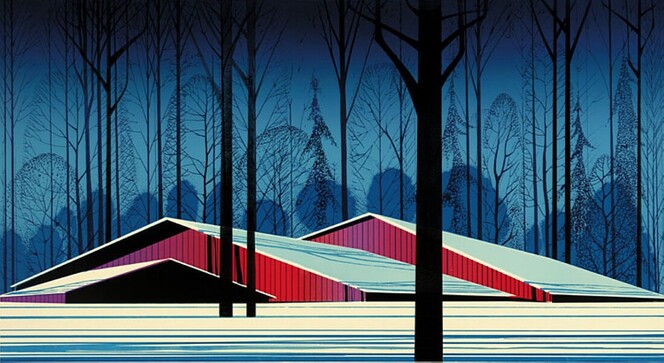
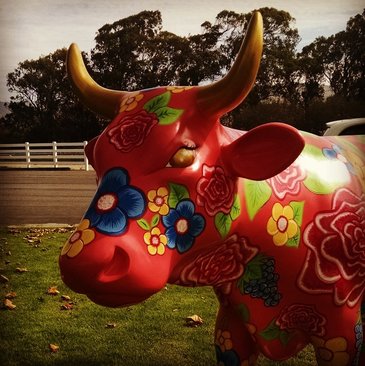
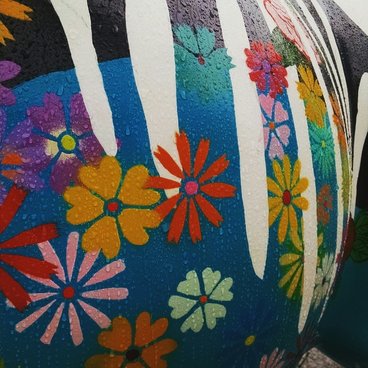
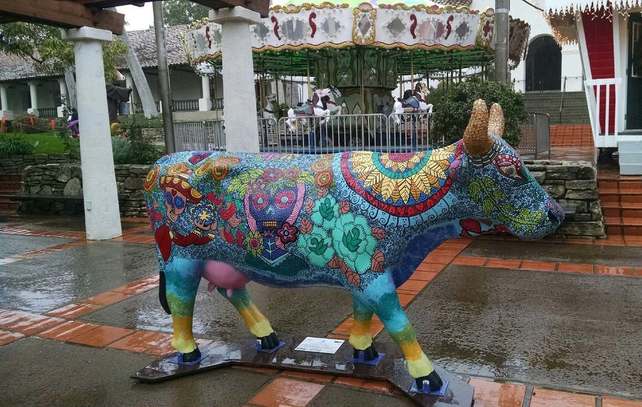
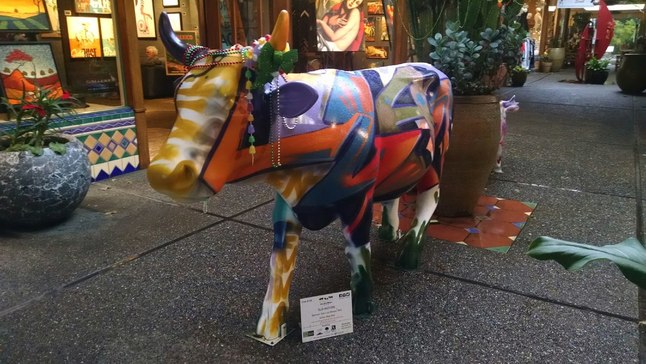
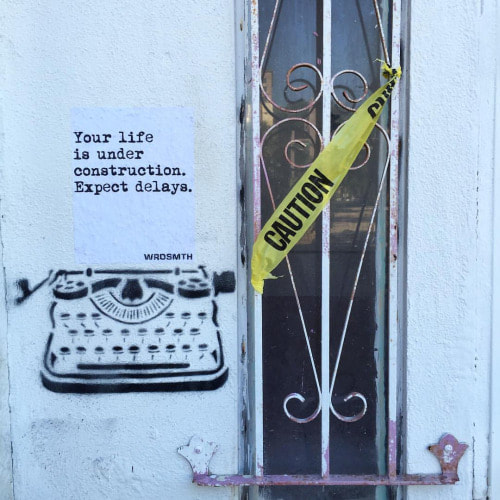
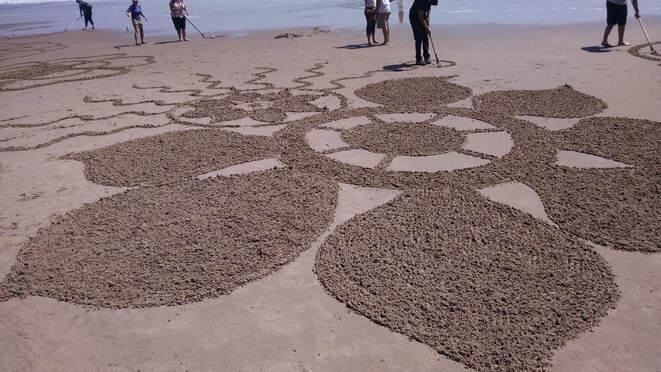
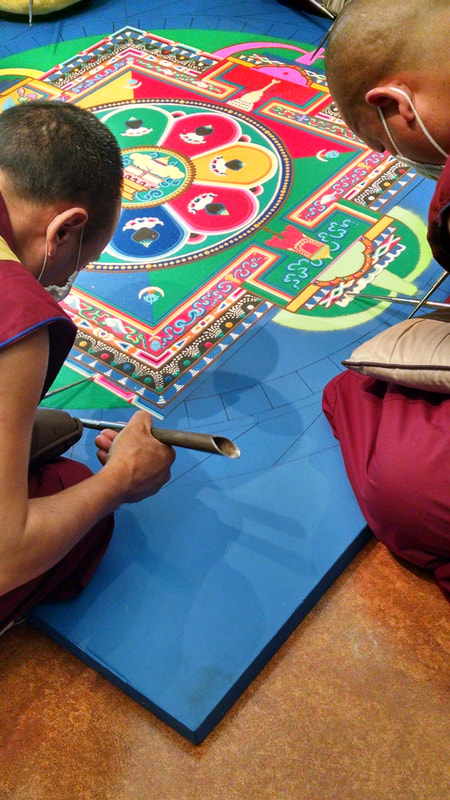
 RSS Feed
RSS Feed
